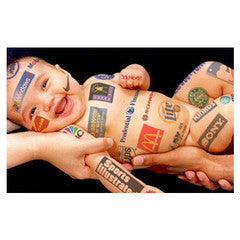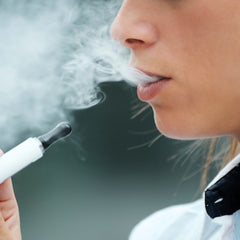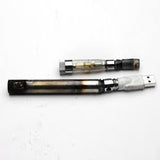The Truth About Vaping Part II: Are Electronic Cigarettes Dangerous?
Since electronic cigarettes have gained popularity over the past few years, there has been an immense amount of negative publicity regarding their safety. Many opponents of vaporizers claim that ecigs are harmful to humans, as they contain chemicals that are known to be cancer causing. They further claim that the electronic cigarette industry is Big Tobacco’s new way of targeting children in an effort to gain a new customer base. These vaping adversaries point to battery explosions, impurities found in e-liquid, and even go so far as to call electronic cigarettes “a gateway to tobacco cigarettes.” However, when each of these arguments are scrutinized and dissected, it is clear that these claims are misleading, deceptive, and in some cases, wholly false. The reality of vaping products is very different from the negative picture painted by propaganda, as will be discussed below.
Argument #1: Electronic Cigarettes Appeal to Children
One of the most successful forms of propaganda campaigns are those that appeal to our sense of morality. This often involves the helpless and innocent, such as senior citizens and  children. It is not surprising, then, that children are heavily used in this anti-vaping campaign that the industry has witnessed for some time. The basic premise of the argument is that electronic cigarette companies, some of which are owned by large tobacco corporations, specifically target children and teenagers. To support these claims, opponents of electronic cigarettes point to the flavors of e-liquid that are available. They assert that flavors, such as bubblegum, watermelon, Skittles, and donuts are specifically intended to appeal to children and teens. The American Lung Association recently stated publicly that “the use of candy flavors and the glamorization of e-cigarette use” is an “aggressive industry marketing tactic targeted at youth.” The odor and taste of these delicious e-liquid flavors entice children and teens into vaping, at which time they get addicted and hooked. These allegations are absolutely preposterous and unsubstantiated. The fact that e-liquids come in sweet flavors does not in any way correlate to the targeting of children. To make this assertion would be to declare that adults do not enjoy these flavors whatsoever, or at least not nearly as much as children do. This is a ludicrous accusation, as adults enjoy sweet flavors just as much as children and teenagers do. In fact, in a recent poll taken by various e-liquid manufacturers, the vast majority of flavors that adults enjoy vaping are fruit and dessert flavors. The mere fact that children also enjoy these flavors does not by any means amount to the electronic cigarette industry targeting them.
children. It is not surprising, then, that children are heavily used in this anti-vaping campaign that the industry has witnessed for some time. The basic premise of the argument is that electronic cigarette companies, some of which are owned by large tobacco corporations, specifically target children and teenagers. To support these claims, opponents of electronic cigarettes point to the flavors of e-liquid that are available. They assert that flavors, such as bubblegum, watermelon, Skittles, and donuts are specifically intended to appeal to children and teens. The American Lung Association recently stated publicly that “the use of candy flavors and the glamorization of e-cigarette use” is an “aggressive industry marketing tactic targeted at youth.” The odor and taste of these delicious e-liquid flavors entice children and teens into vaping, at which time they get addicted and hooked. These allegations are absolutely preposterous and unsubstantiated. The fact that e-liquids come in sweet flavors does not in any way correlate to the targeting of children. To make this assertion would be to declare that adults do not enjoy these flavors whatsoever, or at least not nearly as much as children do. This is a ludicrous accusation, as adults enjoy sweet flavors just as much as children and teenagers do. In fact, in a recent poll taken by various e-liquid manufacturers, the vast majority of flavors that adults enjoy vaping are fruit and dessert flavors. The mere fact that children also enjoy these flavors does not by any means amount to the electronic cigarette industry targeting them.
Another element that is used by vaping opponents to support the claim that electronic cigarettes appeal to children is that advertisers use celebrities in their televisions ads in an effort to lure children and teenagers. They use celebrities, such as Jenny McCarthy and Stephen Dorff, who are meant to “drum up enthusiasm for their products and hook teenagers.” This is another absolutely ridiculous claim on many fronts. First, simply using celebrities in advertising is something that virtually all industries engage in. It is proven effective, and therefore a staple in the field of advertising. The celebrities used in electronic cigarette advertisements are very adult in nature, and in no way demonstrates an attempt to appeal to children specifically. In fact, even the celebrities used as examples by ecig opponents are not in any form or fashion meant to entice children or teens. Both Jenny McCarthy and Stephen Dorff are celebrities most recognized by young adults between the ages of 25 – 45. It is not as though the ads involve Sponge Bob Square Pants and Justin Bieber. Who are electronic cigarette companies supposed to use in their ads? Gene Wilder and Mel Brooks? These claims are completely deceptive, fabricated, and illogical.
to lure children and teenagers. They use celebrities, such as Jenny McCarthy and Stephen Dorff, who are meant to “drum up enthusiasm for their products and hook teenagers.” This is another absolutely ridiculous claim on many fronts. First, simply using celebrities in advertising is something that virtually all industries engage in. It is proven effective, and therefore a staple in the field of advertising. The celebrities used in electronic cigarette advertisements are very adult in nature, and in no way demonstrates an attempt to appeal to children specifically. In fact, even the celebrities used as examples by ecig opponents are not in any form or fashion meant to entice children or teens. Both Jenny McCarthy and Stephen Dorff are celebrities most recognized by young adults between the ages of 25 – 45. It is not as though the ads involve Sponge Bob Square Pants and Justin Bieber. Who are electronic cigarette companies supposed to use in their ads? Gene Wilder and Mel Brooks? These claims are completely deceptive, fabricated, and illogical.
Further claims regarding the dangers of electronic cigarettes for children is that exposure to e-liquid, specifically drinking it, by children has been a major source of concern. To support this assertion, the cases including children ingesting e-liquid have been brought to light. For example, calls to the California Poison Control Center due to children drinking e-juice spiked from 7 calls in 2012 to 243 calls in 2014. Although this is certainly an issue that should be addressed, the solution to it is extremely simple in the form of childproof bottles. However, it is by no means a reason to ban electronic cigarettes entirely. What is not mentioned is that a large percentage of those calls were simply for information, and not due to an emergency.
Moreover, in 2013 alone, there were 2,541 calls to Poison Control Centers for children under the age of 6-years-old ingesting cosmetics; there were 1,758 calls for children consuming household cleaners; an astonishing 4,568 reports of infants swallowing various medications; and thousands of others involving children under the age of 6 ingesting other hazardous materials, such as batteries and pesticides. The point is not that e-liquid bottles should certainly be tamper-proof, but rather that virtually all dangerous common household products pose the same or greater threat to children that e-juices do. Singling out the vaping industry for this is extremely misleading. In fact, the vast majority of e-liquid manufacturers, at least those manufactured in the United States, already come in childproof bottles. This has become an industry standard without the need of government regulation or oversight. The vaping community called for childproof bottles, and the manufacturers have responded.
Argument #2: Vaping is a Gateway to Smoking
Further adding to the proclamation that electronic cigarettes are detrimental, particularly to children and teens, is the allegation that vaping is a gateway to smoking analog cigarettes.  In fact, the American Lung Associated stated that it is “concerned about e-cigarettes becoming a gateway to regular cigarettes.” In an effort to substantiate this, anti-vaping campaigners make several assertions. They protest that the mere fact that electronic cigarettes look similar to analog cigarettes, and have a tip that glows, “make smoking socially acceptable again, after years of fighting to ‘denormalise’ it.” This illogical claim could not be further from the truth. In fact, electronic cigarettes are pushing people further and further away from cigarettes. A study conducted in 2014 found that for the first time in U.S. history, more teenagers vape than smoke cigarettes. Absurdly, anti-vaping activists use the facts of this study to strengthen their argument that teens are using electronic cigarettes “at an alarming rate,” which will ultimately lead to cigarette smoking. However, what they fail to acknowledge is the fact that the vast majority of the teens included in this study were previously smoking cigarettes, and later switched to electronic cigarettes once they discovered them. Therefore, the exact opposite of what anti-vaping campaigners claim is the reality. That is, not only are electronic cigarettes not a gateway to smoking, but rather sway teens away from analog cigarettes and towards electronic cigarettes. Public Health Professor of Boston University Dr. Michael Siegel claims “nine out of 10 teenagers who tried e-cigarettes were already smokers,” which fundamentally means that the very act that the attorney general leads the public to believe is a public health emergency, is in fact a public health benefit. Siegel continues by stating, “likewise with adults: Survey data indicate that e-cigarette use is overwhelmingly concentrated about current and former smokers.”
In fact, the American Lung Associated stated that it is “concerned about e-cigarettes becoming a gateway to regular cigarettes.” In an effort to substantiate this, anti-vaping campaigners make several assertions. They protest that the mere fact that electronic cigarettes look similar to analog cigarettes, and have a tip that glows, “make smoking socially acceptable again, after years of fighting to ‘denormalise’ it.” This illogical claim could not be further from the truth. In fact, electronic cigarettes are pushing people further and further away from cigarettes. A study conducted in 2014 found that for the first time in U.S. history, more teenagers vape than smoke cigarettes. Absurdly, anti-vaping activists use the facts of this study to strengthen their argument that teens are using electronic cigarettes “at an alarming rate,” which will ultimately lead to cigarette smoking. However, what they fail to acknowledge is the fact that the vast majority of the teens included in this study were previously smoking cigarettes, and later switched to electronic cigarettes once they discovered them. Therefore, the exact opposite of what anti-vaping campaigners claim is the reality. That is, not only are electronic cigarettes not a gateway to smoking, but rather sway teens away from analog cigarettes and towards electronic cigarettes. Public Health Professor of Boston University Dr. Michael Siegel claims “nine out of 10 teenagers who tried e-cigarettes were already smokers,” which fundamentally means that the very act that the attorney general leads the public to believe is a public health emergency, is in fact a public health benefit. Siegel continues by stating, “likewise with adults: Survey data indicate that e-cigarette use is overwhelmingly concentrated about current and former smokers.”
Argument #3: Electronic Cigarettes Contain Harmful Chemicals and Carcinogens
Another primary allegation by the anti-vaping establishment is that the e-liquid used in electronic cigarettes contains harmful chemicals and produce carcinogens, which are extremely harmful to vapers and bystanders alike. The primary source used as support for this argument is based on a study conducted by the FDA in 2009, which warned that detectable amounts of toxins and cancerous chemicals were found in e-liquid. This study has an immense amount of flaws and certainly cannot be used to make such severe allegations. Moreover, adding to the incomplete and poorly conducted study is the fact that those against vaping pick and choose specific quotes from the FDA’s statement, while leaving out some very key facts.
One of the most important aspects of the 2009 FDA study is that it was conducted on only two brands of disposable electronic cigarette—Njoy and Smoking Everywhere. Both of  these brands are low-end disposable brands. It is unclear as to whether the ingredients for the e-liquids come from China or what the grade of the ingredients is. The hardware used for disposable electronic cigarettes is also of much lower quality than reusable ones. There are currently hundreds of e-liquid manufacturers, some of which are considered “gourmet” lines, such as Five Pawns, Cuttwood, Suicide Bunny, and Cosmic Fog. The ingredients used in high-end e-liquids are food-grade and pharmaceutical-grade—a very different product than that which is found in gas station brands. In addition, the study conducted in 2009 is the equivalent of 100 years in vaping industry time. The technology that existed 6 years ago is prehistoric compared to what is available on the market today. Various independent studies show that the type of atomizer coil used, the wicking material, the temperature of the coils, and the wattage sent to the atomizers all play a large role in the release of carcinogens. Today, vaping technology allows for the controlling of the atomizer coils so that it does not heat past a certain temperature. Atomizer coils are now being made with organic cotton, nickel and titanium coils, and run at sub-ohms when used with higher wattage. The high-end hardware with gourmet e-liquids has never been tested by the FDA, and therefore further diminishes the significance of its study.
these brands are low-end disposable brands. It is unclear as to whether the ingredients for the e-liquids come from China or what the grade of the ingredients is. The hardware used for disposable electronic cigarettes is also of much lower quality than reusable ones. There are currently hundreds of e-liquid manufacturers, some of which are considered “gourmet” lines, such as Five Pawns, Cuttwood, Suicide Bunny, and Cosmic Fog. The ingredients used in high-end e-liquids are food-grade and pharmaceutical-grade—a very different product than that which is found in gas station brands. In addition, the study conducted in 2009 is the equivalent of 100 years in vaping industry time. The technology that existed 6 years ago is prehistoric compared to what is available on the market today. Various independent studies show that the type of atomizer coil used, the wicking material, the temperature of the coils, and the wattage sent to the atomizers all play a large role in the release of carcinogens. Today, vaping technology allows for the controlling of the atomizer coils so that it does not heat past a certain temperature. Atomizer coils are now being made with organic cotton, nickel and titanium coils, and run at sub-ohms when used with higher wattage. The high-end hardware with gourmet e-liquids has never been tested by the FDA, and therefore further diminishes the significance of its study.
The three primary ingredients found in e-liquid consist of Propylene Glycol (PG), Vegetable Glycerin (VG), and flavorings. The high-end and gourmet lines of e-liquid tend to use natural flavor extracts rather than artificial flavoring found in disposable lines. PG is an FDA approved viscous liquid that is found in a wide variety of products we use on a daily basis. Propylene Glycol exists in margarine, cake batter, soda, ice cream, barbeque sauce, salad dressing, cupcake icing, flavored coffee, and many others. The same holds true for Vegetable Glycerin. You can find VG is a multitude of common household products, including cheese, yogurt, powdered milk, powdered cream, canned vegetables, dried fruits, breakfast cereal, rice, tapioca pudding, cake batter, precooked pasta, and an array of others. The bottom line is that the products ingested through electronic cigarette use are in fact consumed on a daily basis. Cigarettes, on the other hand, are riddled with over 4,000 chemicals—69 of which have been definitively proven to cause cancer. These chemicals include arsenic (poison), ammonia (refrigerant gas), methanol (rocket fuel), butane (lighter fluid), cadmium (battery acid), and many other horrible toxins.
Although eating Propylene Glycol and Vegetable Glycerin is different than inhaling their vapor, logic and common sense makes it clear that it is far less harmful than inhaling the burnt smoke of plant matter that is laced with over 4,000 harmful chemicals. In fact, the U.S. Center for Disease Control (CDC) recently stated, “e-cigarettes appear to have far fewer of the toxins found in smoke compared to traditional cigarettes.” The fact that electronic cigarettes pose low health risks is further reinforced by extensive research conducted by a group of highly reputable doctors, including Dr. Michael Siegel of Boston University, Dr. Laugesen of Health New Zealand, Dr Maciej L Goniewicz of the Roswell Park Cancer Institute, Dr. Eissenberg of Virginia Commonwealth, and Dr. Igor Burstyn of Drexel University. Their collective research has demonstrated that vaping is relatively harmless, and assert that the 2009 FDA study “failed to find harmful levels of carcinogens or toxic levels of any chemical.”
Argument #4: Electronic Cigarettes Encourage Higher Consumption of Nicotine
Another argument commonly presented by anti-vaping enthusiasts is that electronic cigarettes encourage a higher consumption of nicotine. There are many reasons behind these claims, none of which hold much weight. The first reason is that it is unknown whether or not e-liquid manufacturers are accurately measuring the amount of nicotine that goes into their various e-liquids. In other words, a bottle of liquid that is labeled as having 12 mg of nicotine may in fact contain much higher levels of it. Although this may have been true 6 or 7 years ago when the market was flooded with e-liquids made by a couple of guys in their garage, it is certainly not the case today. Well known e-liquid manufacturers have sophisticated machines that accurately measure the amount of nicotine that is added to their liquids. There is no concern regarding inaccurate amounts of nicotine within e-liquids at the current time.
Another reason that is given to reinforce the claim that e-cigs foster higher nicotine consumption is that since one can vape throughout the day without the need to go outdoors, he/she will tend to ingest more nicotine on a daily basis. This may actually have some validity for those who vape the highest nicotine strength, such as 24 mg or 18 mg. However, it is important to keep in mind that the supermajority of vapers will decrease the nicotine level of the liquids within a couple of months after they quit smoking. The most common e-liquid nicotine strengths are 6 mg and 12 mg. Considering an average tobacco cigarette contains 20 mg of nicotine, those using lower nicotine e-liquids will most certainly not ingest more nicotine than a smoker. Many vapers ultimately reduce the nicotine content to 0 mg, which eliminates the nicotine altogether.
The nicotine patch works in a very similar fashion. The first stage of the process involves patches loaded with 21 mg of nicotine for 1 to 6 weeks. The next step is 14 mg at 7 – 8 weeks, followed by stage 3 with 7 mg patches. The most common progression for electronic cigarettes is 24 mg, followed by 18 mg, then 12 mg, then down to 6 mg. Some stay at the 6 mg level of extended periods of time, while others take another step down to 3 mg, and ultimately 0 mg. However, while the vast majority of vapers do not smoke cigarettes while they vape, over half of those using the nicotine patch report smoking cigarettes while on the patch. Combined, the amount of nicotine ingested is substantially higher than an electronic cigarette user would ingest in a 24-hour period.
A third statement made in support of the contention that electronic cigarettes promotes higher levels of nicotine ingestion is that e-cigs are capable of producing much larger quantities of vapor than can cigarettes. True as this may be when referring to users of rebuildable dripping atomizers (RDAs) and sub-ohm vapors, those who engage in these activities seldom use e-liquid with nicotine strength higher than 6 mg. In fact, they predominantly use 3 mg and 0 mg e-liquids. Moreover, the clouds of vapor that is produced by even RDAs pails in comparison to the amount of smoke that is produced from tobacco hookahs, which has become exceedingly popular.
Argument #5: Vaporizers are Dangerous and Can Explode
Another claim made by electronic cigarette opponents is that vaporizer devices have a tendency to catch fire and/or explode. They point to the few cases that involve batteries catching fire, or atomizer combusting. However, as with all of the other arguments presented against vaping, this too is very misguided and incomplete. All of these cases have fallen into one of two categories: it was either a generic piece of equipment or a modified device setup improperly.
There are a handful of brand name electronic cigarette manufacturers who produce quality devices. Brands, such as Kanger, Joyetech, Innokin, SMOKtech, Aspire, Sigelei,  Pioneer4You, and several others have extensive quality control measures in place. However, the market is also flooded with an array of generic electronic cigarette products, many of which are sold in blister packs at smoke shops and gas stations. These generic devices do not meet the safety standards of brand names, and are certainly not made with the same technology, materials, or expertise. It is no wonder, then, that virtually all of the hardware malfunctioning that has been reported has been with these generic brands. The remaining cases of vaporizers catching fire or exploding while in use is with "tweaked" modified devices (MODs) and rebuildable dripping atomizers (RDAs). These components are often fine-tuned by users to push the very laws of physics in an effort to obtain the largest vapor clouds possible. Unfortunately, when this is attempted by someone who has inadequate experience or expertise in building, the result can be a disaster. It is for this reason that all vaping retailers have disclaimers on their sites that require a person have several months of experience prior to partaking in building his/her own atomizer or MOD.
Pioneer4You, and several others have extensive quality control measures in place. However, the market is also flooded with an array of generic electronic cigarette products, many of which are sold in blister packs at smoke shops and gas stations. These generic devices do not meet the safety standards of brand names, and are certainly not made with the same technology, materials, or expertise. It is no wonder, then, that virtually all of the hardware malfunctioning that has been reported has been with these generic brands. The remaining cases of vaporizers catching fire or exploding while in use is with "tweaked" modified devices (MODs) and rebuildable dripping atomizers (RDAs). These components are often fine-tuned by users to push the very laws of physics in an effort to obtain the largest vapor clouds possible. Unfortunately, when this is attempted by someone who has inadequate experience or expertise in building, the result can be a disaster. It is for this reason that all vaping retailers have disclaimers on their sites that require a person have several months of experience prior to partaking in building his/her own atomizer or MOD.
Although those who are dedicated to the demise of the electronic cigarette industry spend millions of dollars to push a series of false and misleading claims about vaping, when the facts are considered more carefully, it is clear that their arguments are deceitful and fabricated. Irrespective of the specific allegation(s) being presented, the bottom line is that the electronic cigarette industry is a new and rapidly-growing area of the economy. There is still much to be researched and learned before any concrete statements can be asserted.










